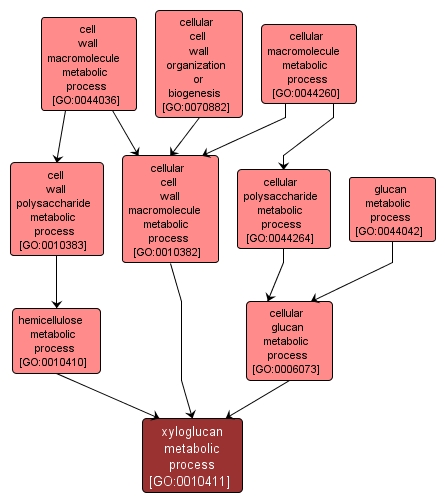GO TERM SUMMARY
|
| Name: |
xyloglucan metabolic process |
| Acc: |
GO:0010411 |
| Aspect: |
Biological Process |
| Desc: |
The chemical reactions and pathways involving xyloglucan, the cross-linking glycan composed of (1->4)-beta-D-glucan backbone substituted at regular intervals with beta-D-xylosyl-(1->6) residues, which is present in the primary cell wall of most higher plants. |
| Synonyms:
|
|

|
INTERACTIVE GO GRAPH
|














